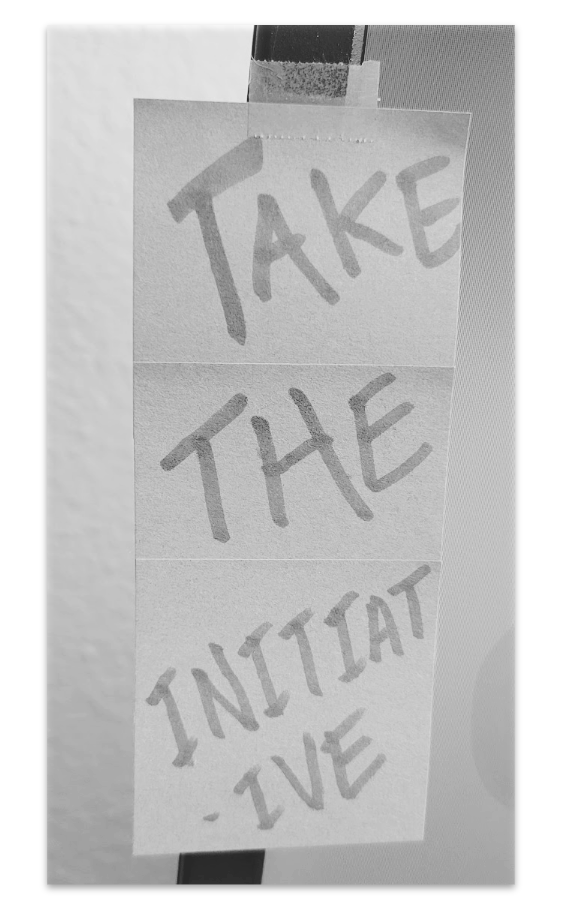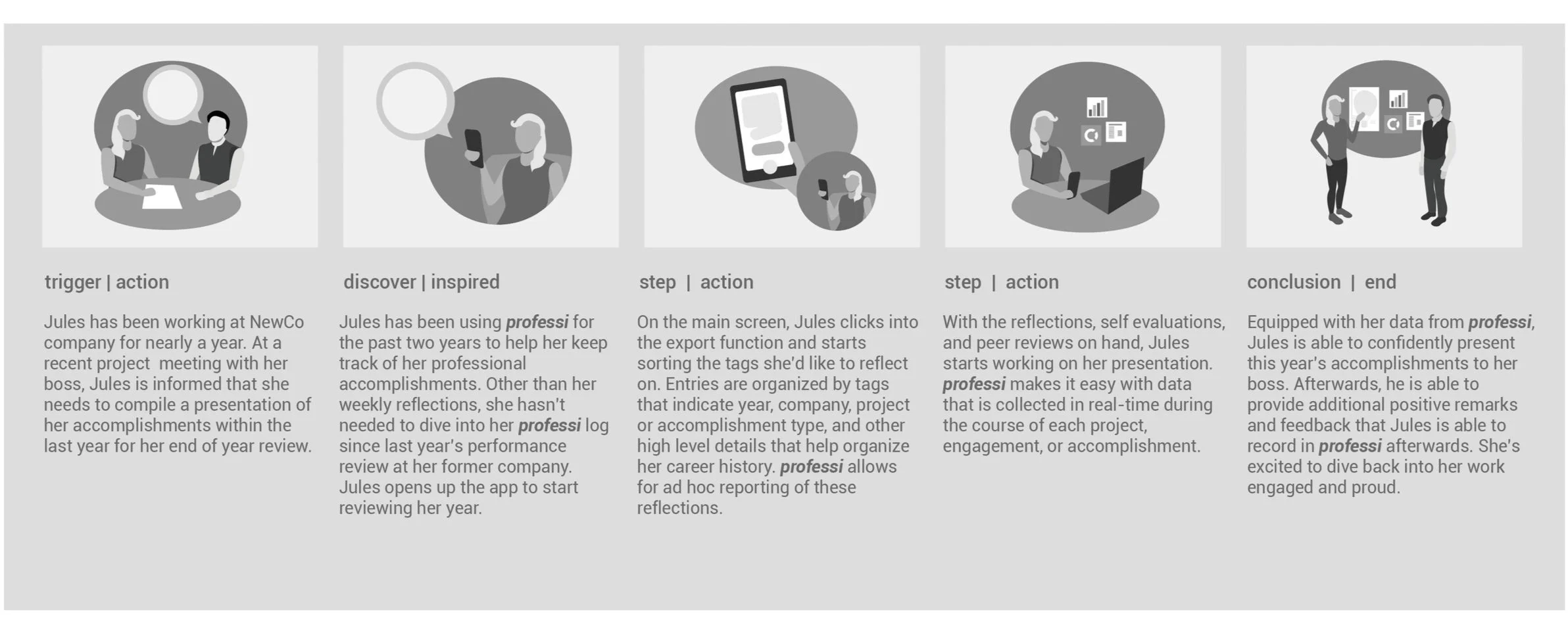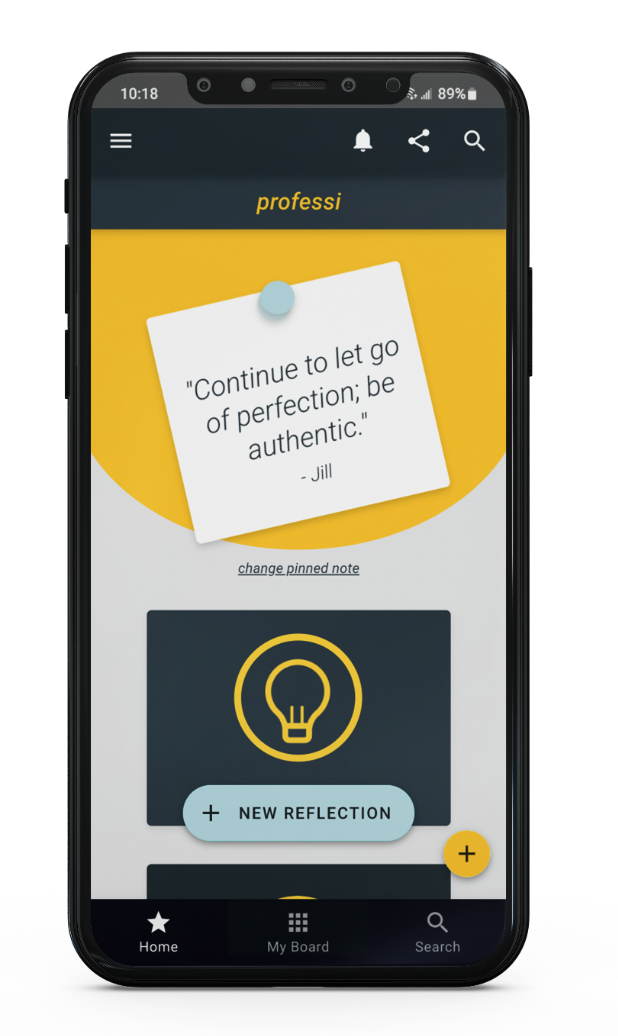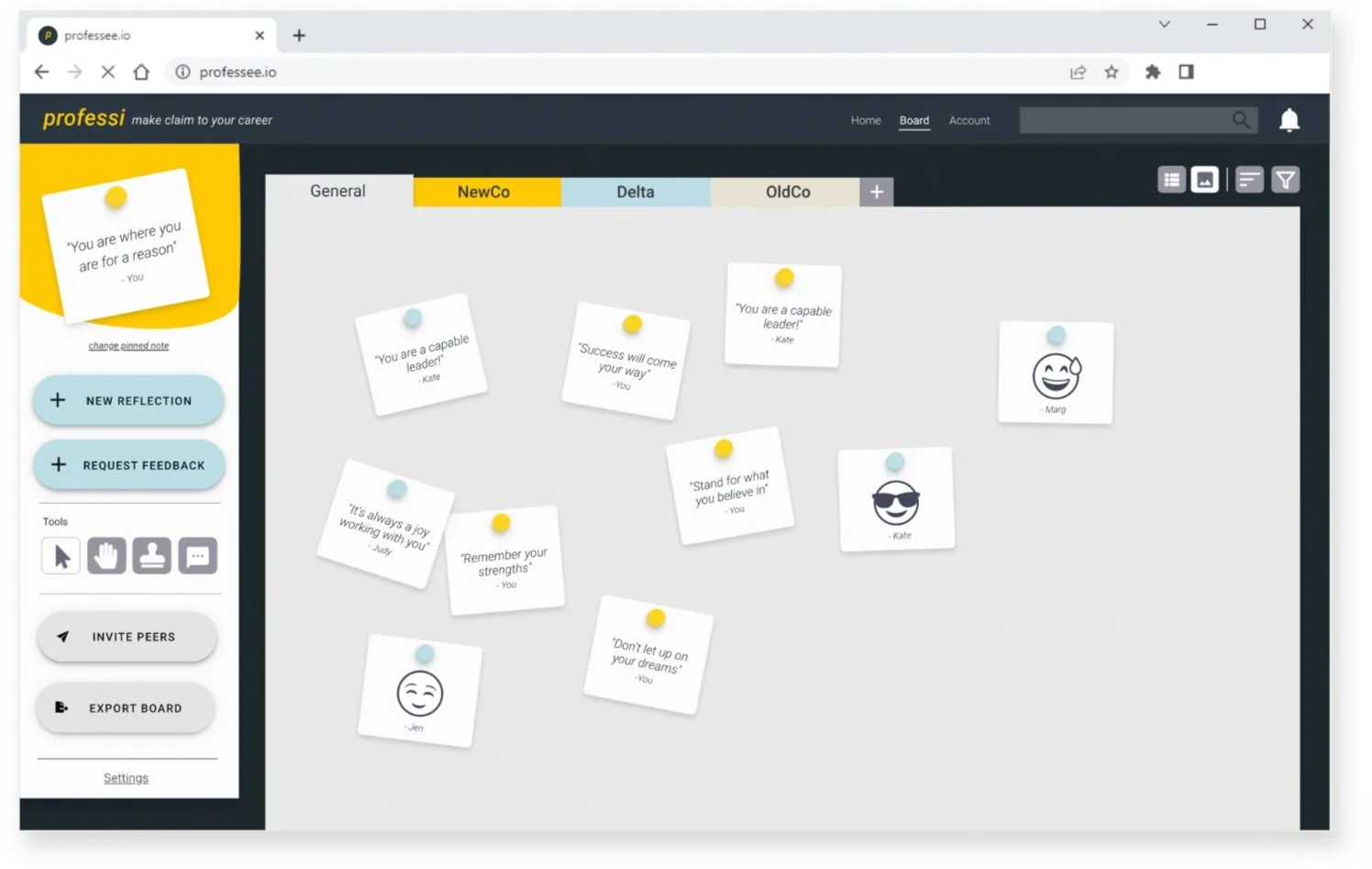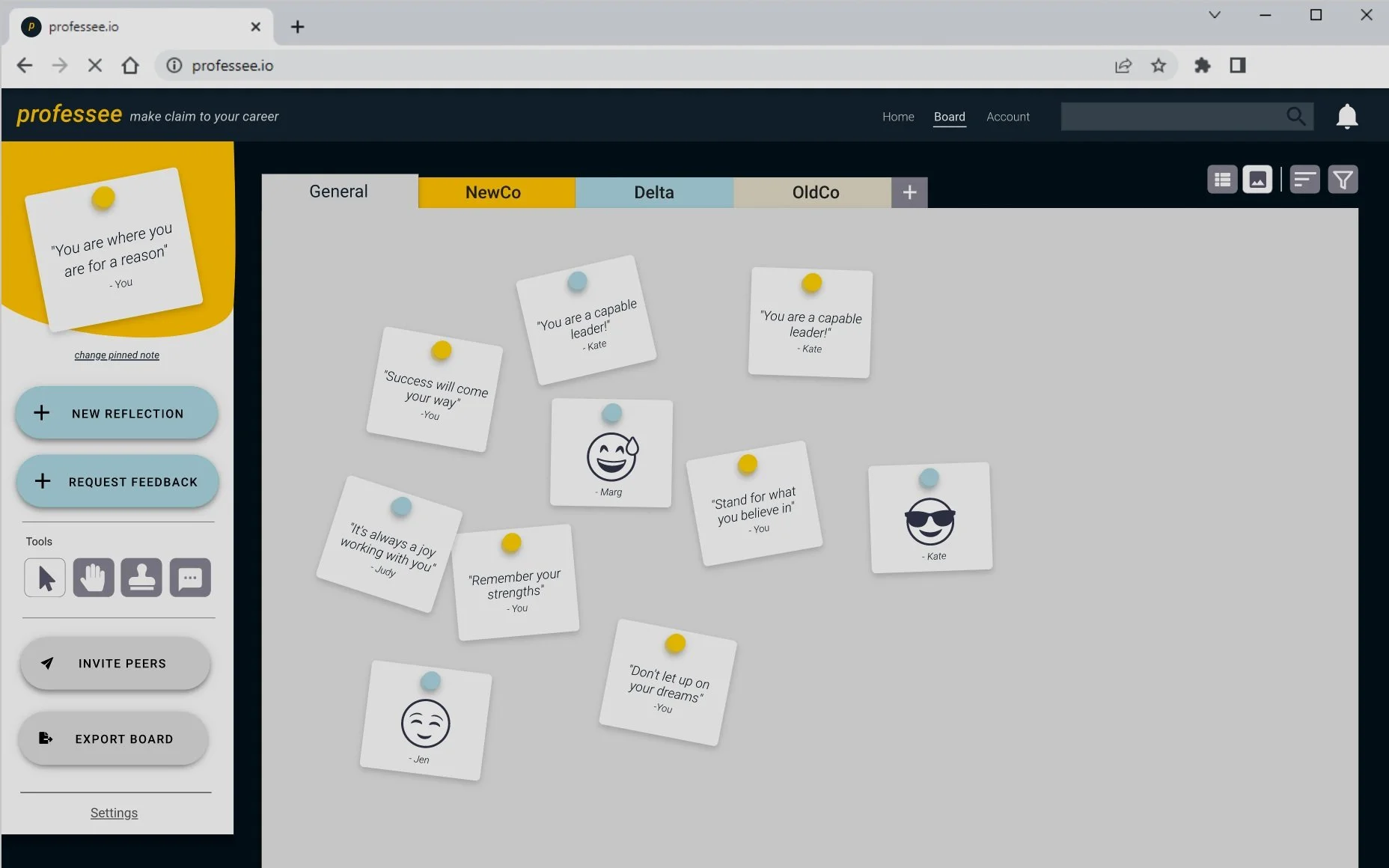Capstone casestudy: professi
The Problem The “ladder climbing” process in the workplace isn’t built for the same sorts of strengths that women possess, women require different skills and habits in order to rise in their company.
The Assumption The culture isn’t going to readily change, so in the meantime, women need tools to empower them to thrive in their work.
In general, women have limited upward mobility in their profession due in part because of one undermining habit. Although some companies are changing, the predominant dynamic is that those who get noticed, get promoted, and those who get noticed are professionals who sell themselves. This isn’t something that women are taught to do, and so there is a need to adapt with new learned skills that empower them to bring attention to their value.
This problem stems from how women (or people who were socialized as such) are taught to relate to others in the world. Modesty and humility, often described as female virtues, come to mind. Out of the three key behaviors that women struggle with in the workplace, the one that stood out to me was the “expectation that others will notice and reward contributions.” This expectation, along with overvaluing expertise over relationships and perfectionism in their work, keeps women from rising and would become the focus of my project.
3 key behaviors of women in the workplace*
Expectation that others will notice and reward contributions
Overvaluing personal expertise over personal connections
Perfectionism in their own work
*Taken from How Women Rise: Break the 12 Habits Holding You Back from Your Next Raise, Promotion, or Job by Sally Helgesen and Marshall Goldsmith
How might we foster mindful reflection so that women can feel confident and better advocate for themselves and their accomplishments within the workplace?
User Insights
My user insights came from two primary sources: surveys and interviews. Through surveys I learned that users often reflect on their careers through writing; whether that be simple lists or something more in-depth. This act of reflection is often prompted by an upcoming job interview, vs. proactively. I heard similar things in my interviews, but also learned that women are often better at selling their peer’s abilities over their own. It was also identified that personal affirmations and journaling helped keep interviewees focused on their goals.
Survey key findings - 30 respondents
People reflect on their career through writing (resume, lists, timelines)
People aren’t proactive about updating their resumes or keep track of accomplishments
Women aren’t always confident in their abilities
Interview key findings - 5 interviews, 30 mins each
Women are better at talking up their peers than speaking
to their own strengthsDaily affirmations help women stay driven and focused
Concept Solution
Help users keep track accomplishments, goals, and professional connections that help them stay up to date on their career qualifications and valuable strengths.
The design concept started with the idea of the desktop monitor sticky note.
Now, in plenty of offices (when we all still went into the office), our coworkers, or even some of us, may have had notes on stuck on their screens; messages ranging from to-do reminders to notes of affirmation. This idea inspired the concept of a reflection board with high level notes for quick reminders of goals or feedback. These digital notes would include more in-depth text memos with further context and reflections on the experiences that may have inspired them. Not only could the notes identify areas of strength, but opportunities where things to need to change (whether that be at the individual or organizational level). Users could have different boards for different topics; like goals, affirmations, or specific career wins.
Target Audience
20-55 year olds
Women or non-binary
Early in their career or senior level
Career-focused
Stakeholders
Personal career coaches or counselors
Internal HR departments
Indeed and other job listing sites
Crazy 8 Sketches
Concept Sketch
Personifying the user
Elisa identifies as non-binary, but was socialized as female growing up, so still struggles with those expectations. Elisa wants to be more confident in their abilities, and thinks that they could do that through better self-reflection and gratitude, but is having trouble starting out and prioritizing the new habit. They’d also like to network with women and other non-binary at their work so that they have more people to go to for feedback as they continue to grow in their career.
Jules is farther in her career and, is more confident in what she brings to the table, but can still be critical over what she could be doing more. Jules has quite the resume of accomplishments, but it’s something that she regularly tracks or organizes for upcoming reviews with her superiors. She’d also like to mentor more young professionals at work, but doesn’t have a streamlined way of doing it with her demanding schedule.
Elisa’s Storyboard
Jule’s Storyboard
Selection of low-fidelity mockup screens
Card sorting exercise
Usability testing and card sorting
User testing went well overall, not too many changes pain points. Originally I had included user stats, things like “top five strengths,” that would be populated by tagged peer feedback. Users didn’t seem to care about the quantification of their reflections, they wanted to focus more on specific messages from others. Users also had a hard time discerning which notes were their and which ones were peer feedback from others. The board names and sorting of them were also confusing, which lead me to conduct my next activity: card sorting. Card sorting informed what would become the high level categories (custom-named by users) for different reflection boards, and more granular labeling for tags like “strength” or “goal.”
User testing key findings - 3 users
Users weren’t concerned with quantifiable data
Users couldn’t easily discern their own reflections from peer feedback on their boards
Categories and labeling was too broad; didn’t really understand it
Card sorting key findings - 2 users
High level categories for boards
Granular labels for tags
High-fidelity Prototypes
professi, a combination of the word “profess” and “profession,” helps user make claim to their careers. Mobile and web app work together to deliver a seamless experience. Watch the recorded demos below to see how Elisa and Jules use the solution to meet their goals.
Elisa’s Flow
Jule’s Flow
Challenges & reflections
In total, this project was completed within the span of 16 weeks. The first 8 were spent on research and project scoping in the discovery phase. The final 8 weeks focused on personas, prototype design, and usability testing. This project was completed by me, with feedback from my cohort peers and instructors. I alone was user researcher, information architect, user experience designer, and user interface designer to name a few roles.
Designing alone is hard and goes against UX. it’s easy to fall victim to:
Scope and feature creep: all the ideas seem like good ideas.
Imposters syndrome: research suggests many paths, who am I to decide where it should go?
Burn-out: Stressing about all of the things at once.






